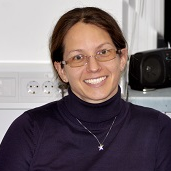Surface Chemistry of Polymers
A special issue of Polymers (ISSN 2073-4360). This special issue belongs to the section "Polymer Analysis and Characterization".
Deadline for manuscript submissions: closed (30 September 2020) | Viewed by 34344
Special Issue Editor
Interests: plasma surface engineering; surface modification; plasma surface functionalization and etching; plasma nanoscience; plasma technologies; biointerfaces; surface analysis by XPS
Special Issue Information
Dear Colleagues,
Polymers and polymer blends have been widely investigated in recent decades. The bulk properties are governed by thermodynamics of polymers, while surface chemistry is by far more complicated, because it involves numerous reactions with rate coefficients that are not always known or determined precisely. In addition, surface impurities influence the surface chemistry of polymers. Furthermore, surface chemistry depends on the orientation of surface molecules, and an important factor is the morphology. The complexity of polymer surface chemistry is particularly imperative upon incubation of polymeric products with complex organic materials, such as body fluids. The response of polymers to biological matter is still poorly understood despite huge efforts from both the scientific community and relevant industries. Unlike bulk chemistry, which is often regarded marginal at room temperature, the surfaces retain their activity well after the appropriate finish has been achieved. Aging effects are often detrimental for many surface finishes of polymers and polymer blends and often represent an unsolved problem in mass application of polymer products with a tailored surface chemistry.
It is my pleasure to invite you to submit a manuscript for this Special Issue on Surface Chemistry of Polymers. Suitable topics include the surface chemistry involved upon grafting of different molecules, in particular, biomolecules for improved biological response, tailoring surface chemistry by functionalization with new functional groups, methods for increasing the surface area such as nanostructuring, and basic phenomena of surface chemistry of polymers. Papers on surface chemistry of polymers or polymer blends containing nanocarbon are also welcome. The papers should include results on monitoring the surface reactions and finish by at least one method for surface characterization. Critical reviews are also welcome—though, in the case of review papers, it is desirable to draw correlations between treatment parameters used by different authors and resultant surface finish.
Dr. Alenka Vesel
Guest Editor
Manuscript Submission Information
Manuscripts should be submitted online at www.mdpi.com by registering and logging in to this website. Once you are registered, click here to go to the submission form. Manuscripts can be submitted until the deadline. All submissions that pass pre-check are peer-reviewed. Accepted papers will be published continuously in the journal (as soon as accepted) and will be listed together on the special issue website. Research articles, review articles as well as short communications are invited. For planned papers, a title and short abstract (about 100 words) can be sent to the Editorial Office for announcement on this website.
Submitted manuscripts should not have been published previously, nor be under consideration for publication elsewhere (except conference proceedings papers). All manuscripts are thoroughly refereed through a single-blind peer-review process. A guide for authors and other relevant information for submission of manuscripts is available on the Instructions for Authors page. Polymers is an international peer-reviewed open access semimonthly journal published by MDPI.
Please visit the Instructions for Authors page before submitting a manuscript. The Article Processing Charge (APC) for publication in this open access journal is 2700 CHF (Swiss Francs). Submitted papers should be well formatted and use good English. Authors may use MDPI's English editing service prior to publication or during author revisions.
Keywords
- surface chemistry
- tailoring surface properties by plasmas
- polymers
- polymer blends
- polymers with nanocarbon
- surface characterization
- biological response






